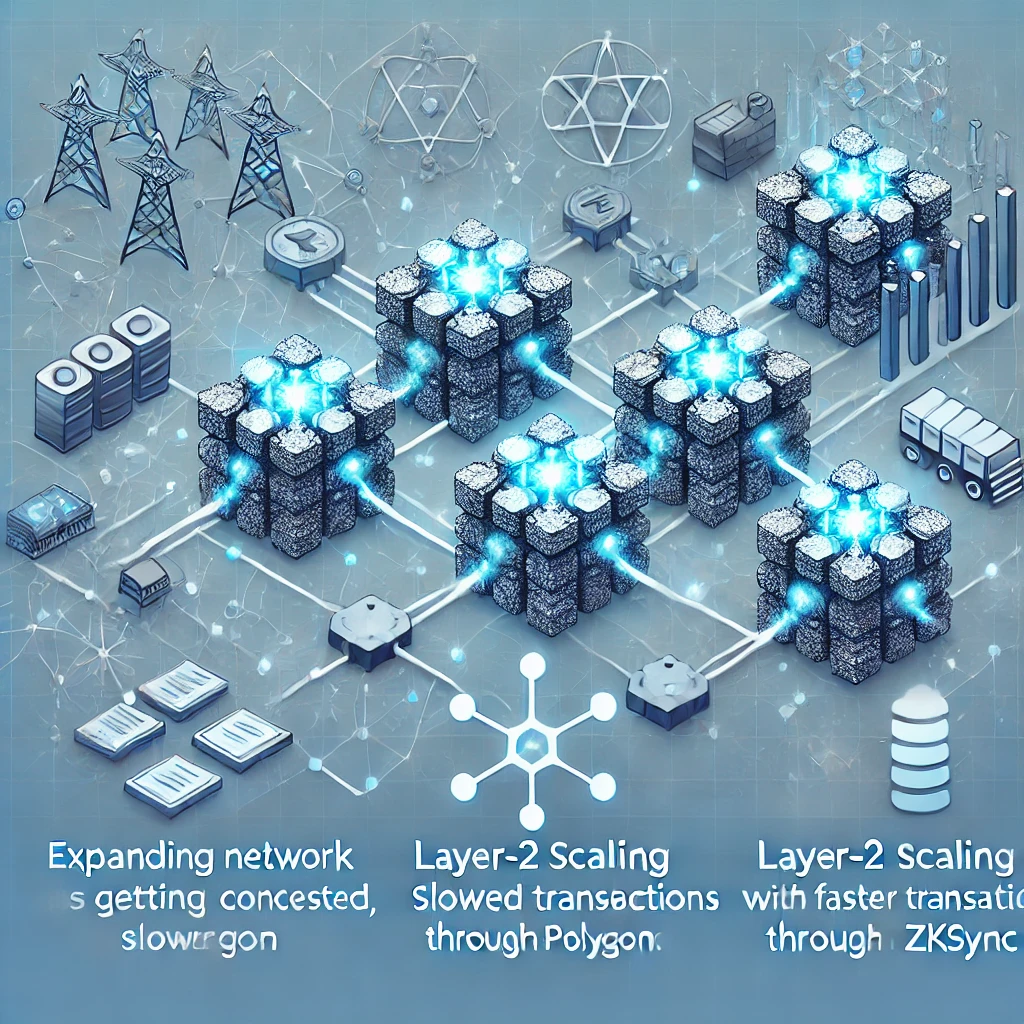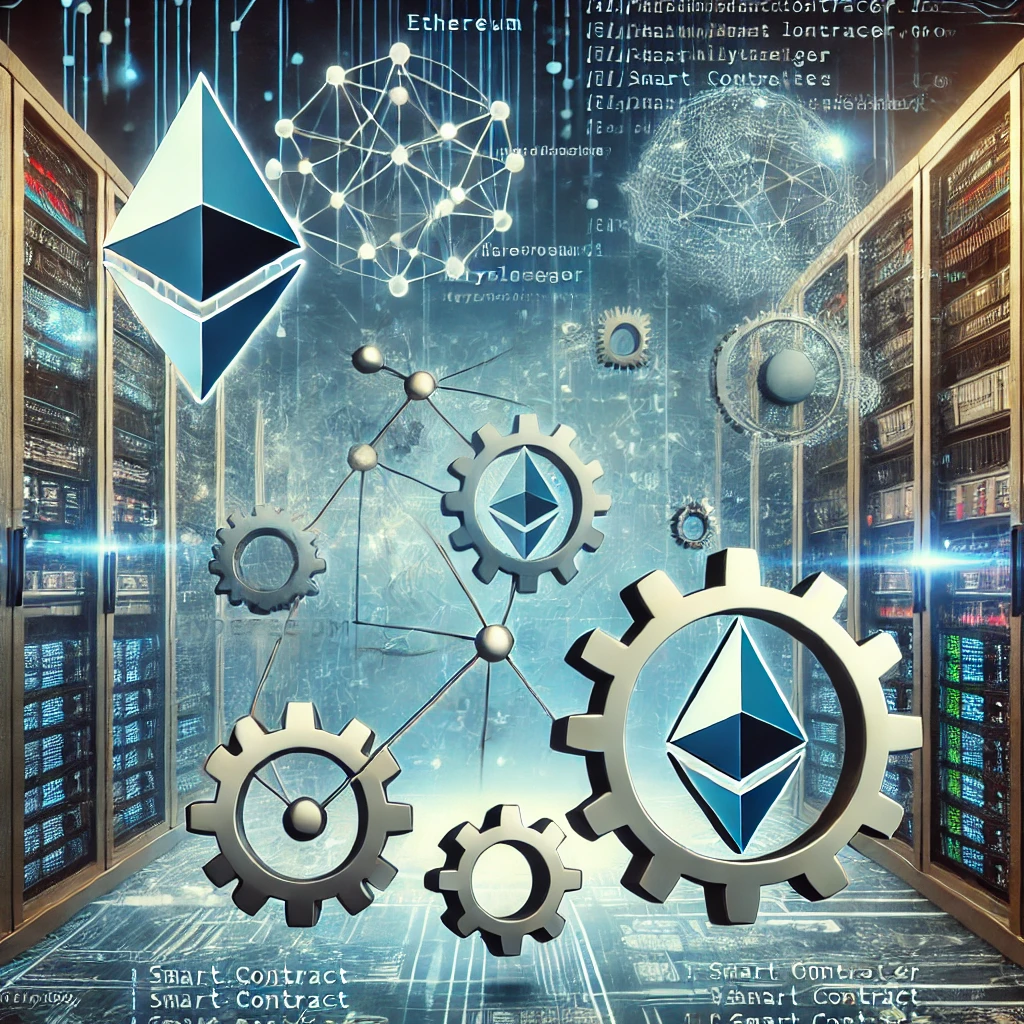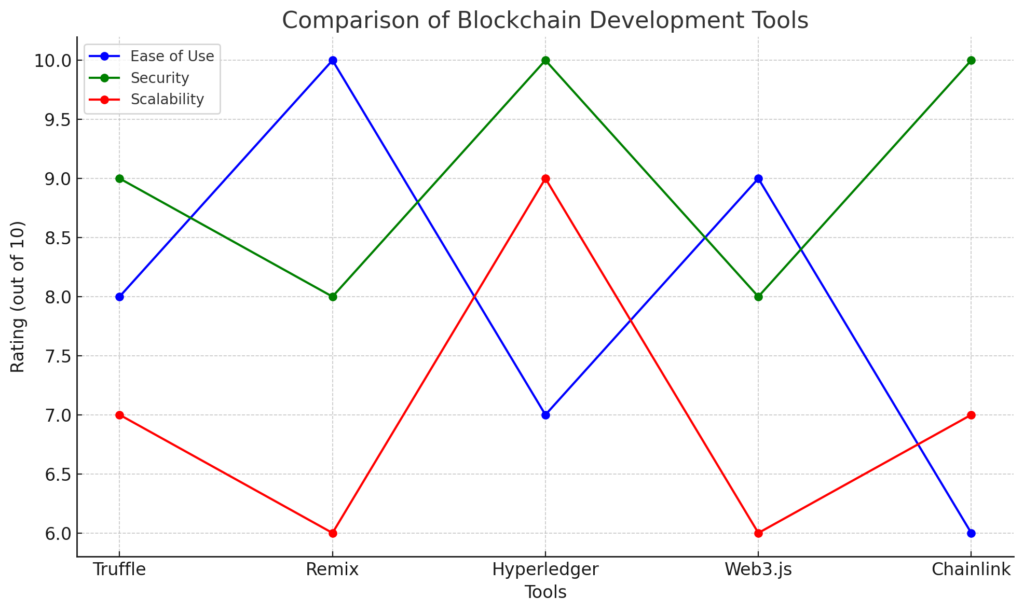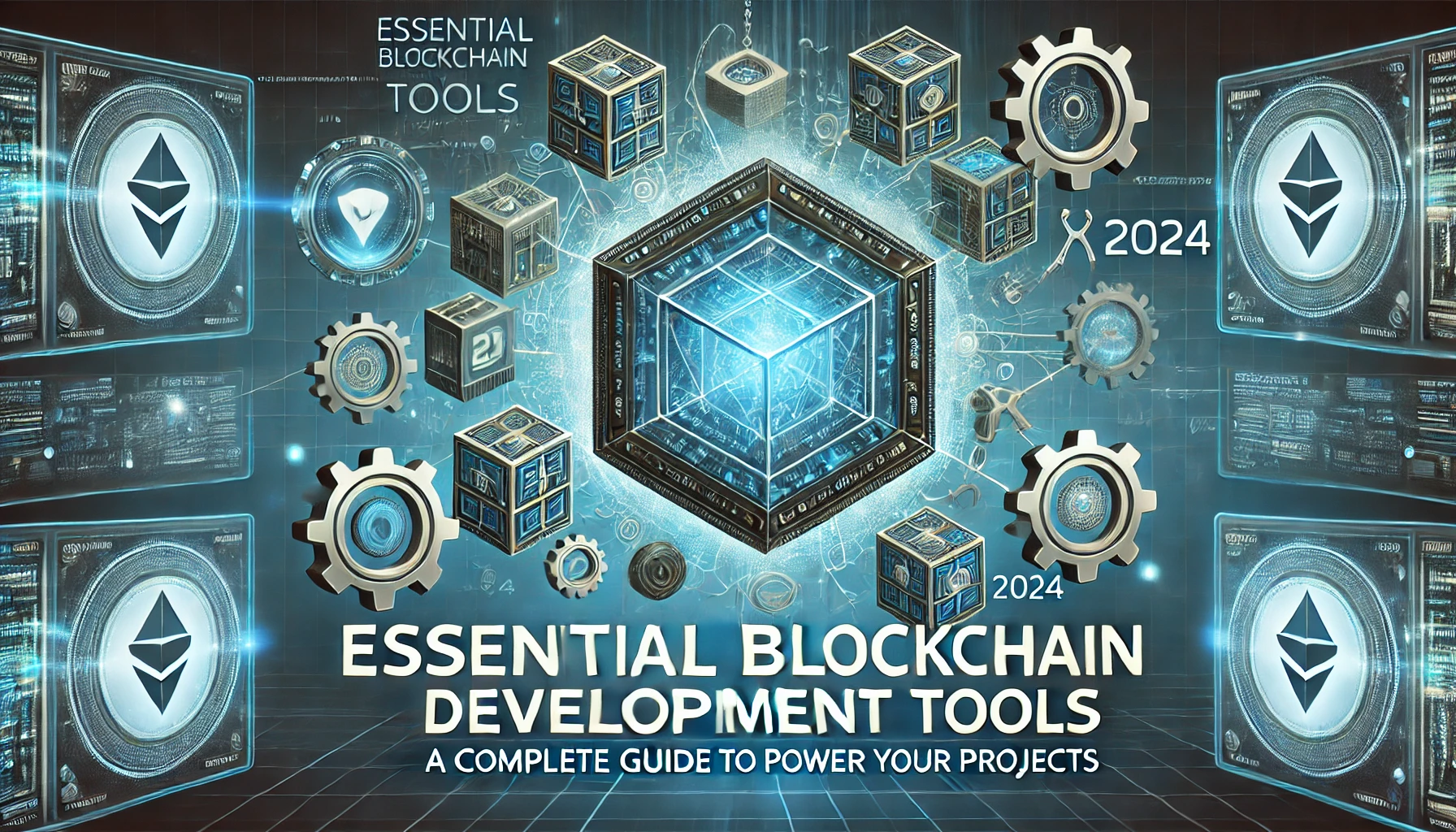The blockchain landscape is evolving rapidly, and as we move into 2025, developers are seeking the best tools to streamline and optimize their blockchain projects. Whether you are building decentralized applications (dApps), creating smart contracts, or developing enterprise-grade blockchain solutions, the right tools can make all the difference. This guide provides an in-depth look at the essential blockchain development tools that will help power your projects in 2025.
What is Blockchain Development?
Blockchain development refers to the creation of applications or platforms that utilize blockchain technology—a decentralized, distributed ledger system designed to enhance transparency, security, and immutability in data transactions. Unlike traditional databases, blockchain stores information in blocks that are linked in a chain and maintained by a network of computers rather than a central authority.

Blockchain development is crucial for a wide range of applications including:
- Decentralized Applications (dApps): Applications that run on a decentralized network rather than a centralized server.
- Smart Contracts: Self-executing contracts with the terms of the agreement directly written into code.
- Cryptocurrencies: Digital assets that operate independently of a central bank, using blockchain to ensure secure and verifiable transactions.
As the blockchain ecosystem continues to grow, development in this space focuses on improving security, scalability, and efficiency. The demand for blockchain developers has surged in recent years, making it essential to understand the tools and platforms that can streamline the development process.
Learn More: Top Blockchain Use Cases in 2025: Platforms & Applications
Use Cases for Blockchain Development Tools
| Industry | Blockchain Tool | Use Case |
|---|---|---|
| Finance | Ethereum, Truffle, Remix IDE | Decentralized exchanges (DEX), automated trading platforms, lending systems |
| Supply Chain | Hyperledger, Chainlink | Tracking goods, improving transparency, preventing fraud |
| Healthcare | Ethereum, Hyperledger | Secure patient data management, clinical trial tracking, pharmaceutical tracking |
| Digital Identity | Hyperledger Indy, uPort | Decentralized identity verification, authentication without intermediaries |
| Gaming | Flow, Enjin | NFTs, in-game assets, decentralized game economies |
Blockchain development tools play a pivotal role across various industries by powering the infrastructure behind decentralized technologies. Here are some real-world examples of how these tools are being used today:
- Finance: Platforms like Ethereum and Hyperledger are being used to develop financial services such as decentralized exchanges (DEX), automated trading platforms, and smart contract-based lending systems. Tools like Truffle and Remix IDE are essential for building and testing these systems.
- Supply Chain Management: Blockchain tools such as IBM Blockchain Platform and Chainlink help businesses track goods through every stage of the supply chain, ensuring transparency and preventing fraud. These tools also integrate with IoT devices, enabling real-time updates and automation.
- Healthcare: Tools like Ethereum and Hyperledger are being utilized to create secure systems for managing patient data, streamlining clinical trials, and tracking pharmaceuticals. Blockchain ensures data integrity and access control, with APIs like Web3.js and frameworks like Embark simplifying dApp development.
- Digital Identity Verification: Blockchain-based identity solutions, powered by tools such as Hyperledger Indy and uPort, allow individuals to control their personal data and provide secure authentication without intermediaries. These projects often rely on smart contract development tools like Solidity to ensure safe and transparent data management.
These use cases highlight the versatility of blockchain development tools in solving complex problems across various sectors, driving innovation and enhancing efficiency.
Want to enhance your blockchain project?
See how top development tools create efficient,
high-performance solutions.
Why Choosing the Right Blockchain Development Tools Matters
Blockchain technology requires a unique set of development tools due to its decentralized, secure, and transparent nature. Having access to the best tools for blockchain development enables developers to:
- Accelerate project timelines
- Ensure robust security
- Facilitate easy integration and scalability
- Simplify smart contract development
- Seamlessly deploy and test blockchain applications
Let’s dive into the top tools that every blockchain developer should know in 2025.

1. Blockchain Programming Languages and SDKs
The foundation of any blockchain project starts with the right programming language and development kits. Different blockchains favor different languages, so it’s important to choose a language that aligns with your platform and goals.
Popular Programming Languages for Blockchain:
- Solidity: The go-to language for Ethereum development tools, used for writing smart contracts on the Ethereum blockchain. Learn more about Ethereum Development Tools.
- Rust: Known for its performance and security, used for Solana and Polkadot development.
- Go: Commonly used for Hyperledger development tools, perfect for building enterprise blockchain solutions.
Developers also benefit from using Blockchain SDKs to accelerate the development process:
- Truffle: A popular Ethereum development environment that simplifies smart contract development and testing.
- Web3.js: A powerful blockchain API tool for interacting with Ethereum-based applications.
2. Smart Contract Development Tools
Smart contracts are the backbone of many blockchain projects. They automate and secure transactions in a trustless environment. The right tools for building smart contracts can save time and reduce bugs.
Key Tools for Smart Contract Development:
- Remix IDE: A browser-based open-source blockchain tool for writing, testing, and deploying Solidity smart contracts.
- Hardhat: A professional development environment for blockchain programming tools, perfect for Ethereum smart contracts. Hardhat also integrates well with other tools like Ganache for testing.
- OpenZeppelin: This is a library of reusable smart contracts that have been vetted and secured by the blockchain community.
3. dApp Development Frameworks
The demand for decentralized applications (dApps) continues to grow, and using the right frameworks is critical for efficiency and scalability.
Best dApp Development Frameworks:
- Drizzle: A front-end framework to build decentralized apps that interact seamlessly with smart contracts.
- Embark: A powerful framework that allows you to build, test, and deploy dApps with Ethereum or Hyperledger. Embark also integrates with IPFS for decentralized storage solutions.
4. Blockchain Testing Tools
Testing is critical for ensuring the security and performance of blockchain applications. Blockchain testing tools allow developers to simulate environments, test smart contracts, and identify potential vulnerabilities before deployment.
Essential Blockchain Testing Tools:
- Ganache: Part of the Truffle Suite, Ganache enables developers to create a personal Ethereum blockchain for testing smart contracts.
- MythX: A security-focused blockchain testing tool that helps detect vulnerabilities in Ethereum smart contracts.
- Manticore: An analysis tool for blockchain security tools that tests and finds security issues in smart contracts.
5. Blockchain Security Tools
Security is paramount in blockchain development. Developers need tools to secure their applications from common vulnerabilities such as re-entrancy attacks and overflow/underflow bugs.
Top Blockchain Security Tools:
- Slither: A static analysis tool for smart contracts, helping developers identify bugs and vulnerabilities in Solidity code.
- CertiK: A blockchain-focused security company offering comprehensive audits and formal verification tools.
- Quantstamp: Another blockchain security tool that provides automated smart contract security audits.
6. Tools for Blockchain Scalability
Blockchain scalability remains a key challenge for developers. As the number of users grows, the performance of the blockchain network can degrade without the proper scaling tools in place.
Tools for Blockchain Scalability:
- Polygon (formerly Matic): A scaling solution for Ethereum that improves transaction speeds and lowers gas fees.
- Optimism: A layer-2 scaling solution that enhances the speed of Ethereum transactions through optimistic rollups.
- zkSync: A zero-knowledge rollup that provides fast and scalable blockchain solutions.
7. Blockchain Infrastructure and Deployment Tools
Once your blockchain application is ready, you’ll need reliable infrastructure and deployment tools to ensure smooth operations.
Essential Blockchain Infrastructure Tools:
- Infura: A blockchain API service provider that allows developers to connect their dApps to Ethereum without needing to run a full node.
- Alchemy: A blockchain infrastructure platform providing the tools to manage and deploy blockchain applications.
- Docker: Frequently used to containerize blockchain nodes, making deployment and management easier.
8. Blockchain Integration Tools
Many businesses require blockchain solutions to integrate seamlessly with their existing systems.
Key Integration Tools:
- Chainlink: The leading decentralized oracle network that allows smart contracts to interact with real-world data.
- Moralis: A powerful API that simplifies backend development for blockchain applications, enabling fast integration with other platforms.
Learn More: Budgeting a Blockchain Launchpad App: Complete Guide 2025

Comparative Analysis of Blockchain Development Tools
Choosing the right blockchain development tool can be challenging, especially with the wide variety of platforms available. Here’s a comparative look at some popular tools:
| Tool | Pros | Cons |
|---|---|---|
| Truffle Suite | – Comprehensive suite for Ethereum development – Great testing environment with Ganache – Built-in migration features for deploying contracts | – Primarily Ethereum-focused, limited cross-chain support – Requires high system resources for large projects |
| Remix IDE | – Browser-based, easy to use – Supports Solidity – Integrated debugger and testing tools | – Limited to smart contract development – Not suitable for full-scale dApp development |
| Hyperledger | – Enterprise-grade blockchain framework – Highly modular – Strong community support | – Steeper learning curve compared to other platforms – Limited use cases outside enterprise solutions |
| Web3.js | – Simplifies interaction with Ethereum blockchain – Lightweight and easy to integrate into existing apps | – Limited to Ethereum-based projects – Requires familiarity with JavaScript |
| Chainlink | – Best for integrating off-chain data with smart contracts – Large and growing network of decentralized oracles | – Requires an understanding of oracle networks – Not useful for standalone dApp development |
By weighing the pros and cons of these tools, developers can choose the most appropriate one based on their specific project needs—whether it’s creating enterprise solutions, developing smart contracts, or building decentralized apps.
| Tool | Ease of Use | Security | Scalability | Documentation | Best For |
|---|---|---|---|---|---|
| Truffle Suite | 8/10 | 9/10 | 7/10 | 10/10 | Ethereum smart contracts |
| Remix IDE | 10/10 | 8/10 | 6/10 | 9/10 | Writing and testing Solidity code |
| Hyperledger | 7/10 | 10/10 | 9/10 | 9/10 | Enterprise solutions |
| Web3.js | 9/10 | 8/10 | 6/10 | 8/10 | Interacting with Ethereum network |
| Chainlink | 6/10 | 10/10 | 7/10 | 8/10 | Decentralized oracles |
Step-by-Step Guide for Using Blockchain Development Tools
To give you a practical example, here’s a high-level step-by-step guide on using Truffle Suite to develop and deploy a smart contract on Ethereum.
Step 1: Install Truffle Suite
Begin by installing Truffle on your local machine. You’ll need to have Node.js installed first.
bashCopy codenpm install -g truffle
Step 2: Initialize a Truffle Project
Create a new project directory and initialize it with Truffle’s basic structure.
bashCopy codemkdir MyBlockchainApp
cd MyBlockchainApp
truffle init
This will set up your basic folder structure for contracts, migrations, and configuration.
Step 3: Write a Smart Contract
In the /contracts folder, create a new .sol file (e.g., MyContract.sol) and write your Solidity code for the smart contract.
solidityCopy codepragma solidity ^0.8.0;
contract MyContract {
string public message = "Hello, Blockchain!";
}
Step 4: Compile the Contract
Next, compile the contract using Truffle’s built-in compiler.
bashCopy codetruffle compile
This generates an ABI and bytecode for deployment.
Step 5: Deploy to a Local Blockchain
Use Ganache to create a personal Ethereum blockchain for local testing. Then, configure the truffle-config.js file and deploy the contract.
bashCopy codetruffle migrate
Step 6: Interact with the Contract
Finally, use Truffle’s console or Web3.js to interact with your deployed contract.
bashCopy codetruffle console
MyContract.deployed().then(instance => instance.message.call())
Step 7: Test the Contract
To ensure everything works, you can write and run tests in the /test directory using Truffle’s testing framework.
bashCopy codetruffle test
This is a simplified guide, but it gives you an overview of how to use Truffle Suite to develop and deploy blockchain projects. You can adapt this process for other tools like Remix IDE or Hardhat based on your project requirements.
| Step | Action | Command/Tool Used |
|---|---|---|
| Step 1 | Install Truffle Suite | npm install -g truffle |
| Step 2 | Initialize a Truffle Project | truffle init |
| Step 3 | Write a Smart Contract | Solidity file (.sol) in /contracts |
| Step 4 | Compile the Contract | truffle compile |
| Step 5 | Deploy to Local Blockchain | Ganache, truffle migrate |
| Step 6 | Interact with the Contract | Truffle Console, MyContract.deployed() |
| Step 7 | Test the Contract | truffle test |
Challenges in Blockchain Development
| Challenge | Description | Solution |
|---|---|---|
| Scalability Issues | Blockchain networks slow down as user numbers grow. | Layer-2 solutions like Polygon or zkSync |
| Security Concerns | Blockchain vulnerabilities can lead to theft or irreversible issues. | Tools like Slither and Quantstamp for security |
| Interoperability Between Chains | Different blockchains can’t easily communicate with each other. | Cross-chain bridges like Polkadot and Cosmos |
| Energy Consumption | High energy usage of Proof-of-Work consensus mechanisms. | Use Proof-of-Stake models like Ethereum 2.0 |
| Complexity of Smart Contracts | Writing secure, bug-free smart contracts is challenging. | Use OpenZeppelin for pre-audited contracts |
| Regulatory Uncertainty | Unclear and shifting regulations in different countries. | Stay updated and use compliance-focused tools |
Despite the transformative potential of blockchain technology, developers often face several unique challenges while working on blockchain projects. Understanding and overcoming these challenges is essential for successful blockchain development in 2025.
1. Scalability Issues
- Problem: One of the biggest challenges in blockchain development is scalability. Most blockchains, especially those using proof-of-work (PoW) mechanisms like Bitcoin and Ethereum, struggle to handle a high volume of transactions at scale. As more users join the network, the system becomes slower and more expensive.
- Solution: Implementing Layer-2 scaling solutions like Polygon or zkSync can help alleviate these issues. These solutions handle transactions off the main chain and only settle them on-chain when necessary.
2. Security Concerns
- Problem: Security is a significant concern in blockchain development due to the irreversible nature of blockchain transactions. Once data is added to the blockchain, it cannot be altered, meaning any security vulnerability could result in irreparable damage, such as theft of assets or data breaches.
- Solution: Tools like Slither and Quantstamp are designed to detect vulnerabilities in smart contracts. Auditing smart contracts and using trusted security tools are crucial steps to ensuring robust security.
3. Interoperability Between Blockchains
- Problem: Different blockchains (e.g., Ethereum, Polkadot, Solana) use varying protocols, making it challenging for them to communicate and share data effectively. This lack of interoperability limits the full potential of blockchain technology.
- Solution: Cross-chain bridges and interoperability protocols like Cosmos and Polkadot aim to enable seamless communication between different blockchain networks. Developers are encouraged to explore these solutions to build more connected decentralized systems.
4. Energy Consumption
- Problem: The energy consumption of proof-of-work (PoW) blockchains like Bitcoin is notoriously high. This poses both environmental concerns and cost challenges, especially for developers looking to deploy scalable solutions.
- Solution: Adopting proof-of-stake (PoS) mechanisms or hybrid consensus models like Ethereum 2.0 can significantly reduce energy consumption. Developers should consider building on chains that use these more efficient consensus algorithms.
5. Complexity of Smart Contract Development
- Problem: Writing secure and efficient smart contracts requires an in-depth understanding of both blockchain technology and the specific programming languages involved (e.g., Solidity for Ethereum). Even small errors can lead to vulnerabilities, such as re-entrancy attacks.
- Solution: Using libraries like OpenZeppelin provides pre-audited, secure smart contract templates. Additionally, tools like Remix IDE and Hardhat offer testing and debugging features that simplify development and reduce the likelihood of errors.
6. Regulatory Uncertainty
- Problem: Blockchain technology is still in its infancy when it comes to regulations. Governments around the world are constantly shifting their stance on cryptocurrency and decentralized applications, creating uncertainty for developers. Compliance with local and international laws is a moving target.
- Solution: Developers must stay informed about evolving regulations and seek legal counsel where necessary. Working with compliance-focused blockchain tools and platforms can help ensure adherence to the most up-to-date standards.
7. User Experience (UX) and Adoption
- Problem: Blockchain applications often have a steep learning curve for end users, especially when it comes to managing wallets, private keys, and understanding decentralized systems. Poor user experience can hinder adoption.
- Solution: Focusing on UX design in blockchain applications is crucial. Incorporating dApp frameworks that simplify the user experience and integrating tools like Moralis for easy backend management can make blockchain applications more user-friendly.
8. Skill Gap and Talent Shortage
- Problem: Blockchain development requires specialized skills, including knowledge of cryptography, smart contract languages, and decentralized networks. The demand for qualified blockchain developers currently exceeds the available talent, making it difficult to hire the right people for the job.
- Solution: Developers can bridge this gap by using development frameworks like Truffle Suite, which simplify complex blockchain development tasks. Additionally, businesses should invest in training and upskilling their current tech teams to meet blockchain development needs.
Conclusion: Powering Your Blockchain Projects with the Right Tools
Choosing the right blockchain development tools in 2025 is critical for the success of your project. From smart contract development to dApp frameworks, and from security tools to integration services, each tool offers a unique advantage in building a secure, scalable, and efficient blockchain solution.
At Miracuves Solutions, we understand the complexity of blockchain development and can help you navigate the technical landscape with ease. Contact us today to power your blockchain project with the expertise and tools you need for success.
Want to integrate blockchain into your business?
Discover how the right tools enhance security scalability, and efficiency.
FAQ
What are the best blockchain development tools in 2025?
In 2025, some of the top blockchain development tools include Truffle Suite, Remix IDE, and Hardhat for smart contract development, Hyperledger for enterprise solutions, and Web3.js for blockchain API integration. These tools streamline the development process, enabling efficient dApp creation, secure smart contract deployment, and effective blockchain infrastructure management.
How do I choose the right blockchain development tool for my project?
Choosing the right blockchain development tool depends on the specific needs of your project. For Ethereum-based applications, tools like Truffle or Remix IDE are ideal for smart contract development. If you’re building an enterprise solution, Hyperledger offers robust support. Consider factors like ease of use, scalability, and security when selecting your tools, and always evaluate documentation and community support for the tool.
What tools are needed to develop decentralized applications (dApps)?
To develop decentralized applications (dApps), you need a combination of smart contract development tools like Truffle or Remix IDE, a blockchain API such as Web3.js, and a dApp development framework like Drizzle or Embark. Additionally, IPFS can be used for decentralized storage, while tools like Ganache enable local testing of dApps before deployment on a live blockchain.
What are the common challenges in blockchain development?
Some common challenges in blockchain development include scalability issues, security vulnerabilities, interoperability between different blockchain networks, and regulatory uncertainty. Solutions like Layer-2 scaling solutions (e.g., Polygon), security audit tools (e.g., Slither), and cross-chain bridges (e.g., Polkadot) help developers address these challenges effectively.
What are the best tools for smart contract development?
The best tools for smart contract development include Remix IDE for browser-based Solidity development, Truffle Suite for a complete development and testing environment, and OpenZeppelin for pre-audited, reusable smart contracts. These tools offer developers comprehensive solutions for creating, testing, and securing smart contracts on the blockchain.
How do blockchain security tools improve smart contract safety?
Blockchain security tools like Slither and Quantstamp help improve smart contract safety by performing static analysis, identifying vulnerabilities such as re-entrancy attacks, overflow/underflow errors, and other coding issues. Using these tools during the development and testing phases ensures that smart contracts are robust, secure, and less prone to exploitation.








